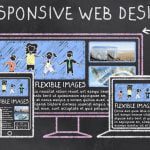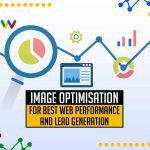Centre of Excellence in Web Design and Development!
People today have greater ease when it comes to shopping and leisure thanks to the development of the internet, which opened the door for the digital world. Since more and more customers are using internet resources to find and purchase the goods and services they require, retailers and company owners work hard to make sure they have a solid online presence. They frequently do this through a website’s ideal design.
To keep up with the changing demands of audiences, web design and development should be designed in a way that attracts more audiences. Websites should be able to retain your readers longer, and make it easier for them to take action and change from being a lead to a converting or buying customer.
But how can you build websites so you achieve this? With a better understanding on how to develop websites and its role in digital marketing and ranking high in search engines, you can get a better look on how such efforts can turn your website into a money magnet.
Introduction
Web design and development plays a critical role in establishing the presence and fostering long-term relationships with customers, Especially in today’s digital age, having a strong online presence is a MUST for businesses to succeed.
With a well-designed website, businesses can efficiently communicate their brand and offerings to potential customers. It also serves as an accessible platform for current customers to interact with the company and make purchasing decisions. Additionally, incorporating elements of SEM search engine marketing can further increase visibility and attract new customers.
On top of providing a means for customer acquisition, a well-developed website can also facilitate ongoing communication and engagement with current customers. This can include providing updates on new products or promotions, collecting feedback, or offering online customer support. By actively maintaining these relationships, businesses can not only retain current customers, but also encourage repeat purchases and referrals.
A systematic web design and development for generating revenue and profits are essential skills for businesses to thrive by engaging and fostering long-term customer relationships.
Table of Contents
What is Web Design Development

The process of building a website is referred to as web design and development. It requires the two key skill sets of web design and web development, as the name would imply. How a website looks (web design) and how it works (custom web development) are both essential in making appealing websites.
To produce a website that is effective in turning visitors into customers for today’s modern business. It is important to understand how to combine these two skill sets. This article will provide some tips on how to do just that.
Web design is all about creating an appealing and visually appealing website – both for professional use and eCommerce website development. The layout, colour scheme, font choice, and overall aesthetics of the site should be carefully considered. All of these elements must work together to create a site that is easy to navigate and provides a good user experience.
Web development, on the other hand, focuses on making sure the site works properly. This includes ensuring that all the links work correctly, the site loads quickly, and any forms or other interactive elements are working properly. Development also involves making sure the site is secure and can handle any traffic it may receive.
The key to combining these two skill sets is to understand how they work together. For example, a well-designed website will be much easier to navigate if the development team has ensured that all the links are working correctly. Likewise, a site that loads quickly and is easy to use will be more likely to keep visitors on the site longer and encourage them to convert into customers.
By understanding how web design and development work together, you can create a website that is both appealing and functional. This will help you maximise your website creation and chances of turning visitors into customers.
Defining Web Design
The term “web design” describes the layout of websites that are seen online. Instead of software development, it typically refers to the user experience components of website development.
A web designer’s job is to make sure a website looks good, functions well, and sometimes even create content. For example, how the colours, text, and pictures are used together is called appearance. The way information is organised and sorted on a website is its layout. A successful web design will be user-friendly as well as visually appealing for the people who visit it to match up with the site’s brand identity.
Many websites focus on keeping things simple so that viewers won’t be distracted or confused by additional information and functionality. Creating a trustworthy website is vital for any web designer, and a key component of that goal is to remove anything that could potentially anger or annoy users.
Two techniques that have become increasingly popular for developing websites are responsive and adaptive design. Adaptive design keeps the website’s content in set layouts based on usual screen sizes, while responsive design makes the information more fluid to match various screen dimensions.
A responsive design that looks consistent across devices is key to keeping users engaged and trusting your site. Even though some designers may feel uncomfortable not having complete control over how their creations will be seen on various devices, it is essential to keep in mind that responsive design can pose many difficulties. If those same designers are also tasked with being responsible for the content. They might need to broaden their skill set—but at the end of the day, they’ll wind up helping themselves by having full authority over what appears as the final product.
The creation of profitable, efficient, and appealing web design is one of the essential components of a brand’s success. An understanding of human vision is necessary, combined with knowledge of visual perception, to build such high-quality displays, whether they are graphical (such as websites) or physical (such as remote controls). Web designers can create things that adhere to these unifying traits through their years of experience and trainings. Let’s learn more about your web design team – front-end developer and back-end developer,
Front-End Development
A front-end developer is responsible for the design of websites and apps that users can access and interact with. The next time you visit a website, take note of the layout and colours – these are all created by front-end developers.
In addition to the visual design, front-end developers also coded the website so that it is responsive and easy to use. This involves a lot of testing to make sure that the site works well on different devices and browsers.
The goal of front-end development is to create a seamless user experience. This means that users should be able to easily find what they are looking for, without getting frustrated.
Front-end developers need to have a good understanding of both web design and development. They need to know how to code in HTML, CSS, and JavaScript. In addition, they must be familiar with user experience (UX) principles.
Front-end developers usually work closely with back-end developers and web designers. This collaboration is important to create a well-rounded website or app.
What is Back-End Development
Back-end development refers to the server-side of web development. This includes the database, web applications, applications, and servers that power websites and apps.
The back end is what allows users to interact with the front end. For example, when you fill out a form on a website, the back-end code processes your input and stores it in a database.
Back-end web developers need to have a good understanding of programming languages, and programs such as PHP, Ruby on Rails, Python, and Java. In addition, they must be familiar with server administration and security issues.
A back-end web developer works on more complex areas of a website. It can be more challenging than front-end development because it is not as visible to users. This means that back-end developers need to have strong problem-solving skills.
Back-end development is usually less creative than front-end development. However, it is still an important part of the web development process. Back-end developers have to be able to work well with other team members, such as front-end developers and web designers.
Elements of a Web Design Services

It can be tough to decide which website elements to include when you’re also trying to factor in user requirements, your business goals, marketing objectives and branding. Plus, if these elements aren’t optimised for the users’ experience, your website is likely to fail.
As a business owner, your website is crucial to acquiring new and improved clients and customers. Hiring web development services is crucial for your website’s success. So, what factors distinguish an excellent website from a merely good one? Here are 10 qualities that all great websites share.
1. Aesthetically pleasing
The first thing a potential customer will see when they visit your website is the overall design. This is why it’s critical to make sure your website is well-designed and visually appealing. The colours, fonts, and images you use should reflect your brand and be aesthetically pleasing to look at.
2. Organised and easy to navigate
Your website should be organised in a way that is easy for visitors to understand. The navigation bar should be simple and intuitive, and all of your pages should be easy to find. Users should be able to get from one page to another without any trouble.
3. Responsive Design
In today’s world, it’s essential that your website be responsive, meaning it can be accessed and viewed on any device. With the majority of people now using mobile devices to browse the internet, it’s more significant than ever to make sure your website is responsive.
4. User-Friendly
Your website should be easy to use, with clear and concise text that is easy to read. The font you use should be legible, and the overall design should be simple and uncluttered. Users should be able to find what they’re looking for quickly and easily.
5. Fast loading speed
No one likes a slow website, so it’s critical to make sure yours loads quickly. A good rule of thumb is that your website should load in under 3 seconds. If it doesn’t, you’re likely to lose visitors.
6. SEO optimised
SEO, or search engine optimisation, is the process of optimising your website for Google and other search engines. This includes using keywords throughout your website, as well as making sure your website is mobile-friendly and loads quickly.
7. Secure
With data breaches becoming more and more common, it’s important to make sure your website is secure. Users should see that your website is secure before they input any sensitive information, such as their credit card details.
8. Up-To-Date
Your website should always be up-to-date with the latest information about your products or services. If there are any changes to your offerings, make sure to update your website accordingly.
9. Engaging content
The content on your website should be well-written and engaging. It should be relevant to your target audience and offer value to them. The tone of your content should also match that of your brand.
10. Calls-To-Action
Your website should have clear and concise calls-to-action (CTAs). CTAs are buttons or links that encourage visitors to take a specific action, such as signing up for a newsletter or making a purchase. They should be placed prominently on your website so that visitors can’t miss them.
7 Steps in Web Design Development for Effective Branding

The process of web design and development is not only important for creating an aesthetically pleasing website, but it’s also crucial for effective branding. Your website is often the first interaction a potential customer will have with your brand, so it’s critical to make a good impression.
Your website should reflect your brand identity in every way, from the colours and fonts you use to the overall tone and style of your content. Creating a consistent branding experience across all touchpoints is essential for building trust and credibility with your audience.
When executed correctly, web design and development can be a powerful tool for creating an effective sales machine. By following the tips in this article, you can create a website that not only looks great, but also helps you achieve your business goals. Here are 7 of our top tips on how to deliver web designs ideal for effective branding:
Data Gathering
Your website designer should be able to gather data that is beneficial for the design of your website. A development company typically comes with a digital marketing team that can help you in this aspect. This team can help you determine the target market for your website and gather data on their demographics, interests, and behaviours. This data can be used to create a buyer persona, which is a fictional representation of your ideal customer.
Your web development company should also be able to provide you with competitor analysis. This involves looking at your competitors’ websites and analysing their design, user experience, content, and overall effectiveness. This information can be used to improve your website and make sure it stands out from the competition.
Planning
After the data has been gathered, it’s time to start planning your web design. This is where your branding comes into play. Your branding should be reflected in every aspect of your website, from the colours and fonts you use to the overall layout and user experience.
Your web design should be based on your brand identity, which includes your mission, values, and goals. The brand website should reflect your brand’s personality and help you connect with your target market. Keep in mind that first impressions are important, so make sure your website makes a good one.
Design
When planning your web design, it’s indispensable to keep your brand identity in mind. Your website should reflect your mission, values, and goals. Use colours and fonts that accurately reflect your brand personality, and create a layout that is both visually appealing and easy to navigate.
Remember that first impressions are critical, so make sure your website makes a good one. By following these tips, you can create a website that accurately reflects your brand and helps you connect with your target market. If you hire a website designer or digital marketing agency make sure your graphic design aligns with our brand.
Development
Once your website is designed and tested, it’s time to start the development process. This involves coding the front-end of your website and developing any features or functionality that you need.
Your web development team should be able to take your designs and turn them into a functioning website. They will also add in any features or functionality that you require. If you’re not sure what you require, they can help you determine the best way to achieve your goals.
After your website is developed, it’s important to launch it on a reliable hosting platform. This will ensure that your website is always available and running smoothly. A good web hosting provider will offer 24/7 support in case there are any issues.
Testing
After your website is designed and developed, it’s important to test it before launching it. This will ensure that everything is working properly and that there are no errors. Website testing can be done using various tools, such as Google Analytics and HotJar.
Google Analytics is a free tool that can be used to track website traffic and user behaviour. HotJar is a paid tool that provides heatmaps, recordings, and surveys. These tools can be used to gather data on how users interact with your website and identify any areas that need improvement.
A/B testing is essential for your website. This means that you show two versions of a web page to separate groups of users and compare the results. You can use A/B testing on different parts of your website, such as the headline, call-to-action button, and images.
Launch
After your website is designed, developed, and tested, it’s finally time to launch it. This is an exciting moment for any business, but it’s also important to make sure everything is perfect before going live.
Take the time to review your website one last time and check for any errors or areas that require improvement. Once you’re happy with everything, hit the publish button and let the world see your beautiful new website.
Maintenance
Once your website is live, it’s critical to keep it up-to-date and relevant. This means regularly publishing new content, such as blog posts, infographics, and eBooks. You should also update your website design every few years to keep it looking fresh. And don’t forget to keep an eye on your website analytics, so you can see how users are interacting with your site and identify any areas that need improvement.
By following these tips, you can create a website that accurately reflects your brand and helps you connect with your target market. A well-designed and effective website is an essential part of any business, so make sure yours is up to date. If you require help getting started, contact a web design and development agency. They can help you create a beautiful and effective website that meets your specific needs.
How Does Web Design and Web Development Work Together?

The process of web design and development is not only important for creating an aesthetically pleasing website, but it’s also crucial for effective branding. Your website is often the first interaction a potential customer will have with your brand, so it’s critical to make a good impression.
Your website should reflect your brand identity in every way, from the colours and fonts you use to the overall tone and style of your content. Creating a consistent branding experience across all touchpoints is essential for building trust and credibility with your audience.
When executed correctly, web design and development can be a powerful tool for creating an effective sales machine. By following the tips in this article, you can create a website that not only looks great, but also helps you achieve your business goals.
Web Design and Development Frequently Asked Questions

How much does a typical website project cost?
On a general note, a basic website might start at a baseline cost of approximately $4,000. However, for a more complex, fully integrated custom website that requires advanced features and bespoke design elements, the costs could exceed $50,000.
It’s important to consider that these figures are indicative and that detailed quotes are provided after understanding the full scope of the project.
What does the web design and development process entail?
This phase is followed by in-depth market and audience research to tailor the design and functionality. Subsequently, we move into wireframing and prototyping, which helps in visualising the structural layout.
The creative design phase then brings the visual aspects to life, ensuring it aligns with your branding and aesthetic preferences. Development involves rigorous programming work to build the site’s backbone, integrating all necessary functionalities. Before launch, detailed testing is conducted to ensure optimal performance.
The launch phase marks your website’s debut, with continued monitoring for any immediate adjustments.
Does your Australian web design agency offer ongoing website maintenance or support post-launch?
These services are designed to ensure that your digital presence remains up-to-date, secure, and functions smoothly at all times. This approach helps in safeguarding your online investment over the long term, addressing any issues promptly and efficiently, and making necessary updates to keep up with evolving web standards and technologies.
Could you outline your approach to website creation?
This is followed by wireframing to outline the site’s structure, then moving into the design phase where we bring your vision to life visually. Design and development is next, where we build and integrate the site’s functionalities.
Testing ensures everything works as planned before the final launch, which marks the beginning of your new digital presence.
Our process ensures seamless integration and alignment with your digital strategy, resulting in a superior website that meets your business goals.
Can you assist with updates and improvements on an existing website?
We employ the latest knowledge, tools, and built-in marketing strategies to ensure your website continues to meet and exceed your business needs, ensuring it remains a vital and effective tool in your marketing arsenal.
Do you specialise in custom websites, or do you utilise pre-built templates?
Whether you’re looking for a uniquely tailored website that stands out from the competition or a more cost-effective solution using sophisticated pre-built templates, we have the expertise to deliver a platform that is exceptional and truly reflects your brand’s identity.
What is the typical timeframe for constructing a website?
However, a complex, custom-built site requiring advanced functionalities and bespoke design elements might necessitate a timeline of 3-6 months or more.
It’s important to note that these timeframes are approximate and can vary depending on the project’s specific demands and any unanticipated challenges that arise during development.
Can your agency support branding and other digital marketing initiatives?
This includes crafting brand-specific marketing campaigns, implementing effective SEO strategies, creating compelling content, and providing targeted branding advice. Our goal is to enhance your brand’s online visibility and impact, driving your digital marketing initiatives forward and helping you achieve your online objectives.
With our integrated approach, we ensure that all aspects of your digital presence are aligned and optimised for success.
How does a digital agency use content creation search engine optimisation?
A digital agency leverages content creation and search engine optimisation (SEO) to enhance the online visibility and performance of businesses. By employing an effective SEO strategy, they optimise website content for targeted keywords and user intent, ensuring higher rankings on search engine results pages.
Utilising content management systems, they streamline the creation and management of website content, including landing pages for ecommerce websites. With a focus on custom design and site structure, they develop exceptional platforms that cater to the needs of various industries, such as the construction industry.
Their multidisciplinary team of web designers, developers, marketing team, and SEO specialists collaborate to deliver high-quality new websites that drive online sales and enable businesses to thrive in the digital landscape.
What role does the web design process play in creating a high-quality website?
The web design process is essential for creating a visually stunning and user-friendly website that meets the needs of your target audience
From concept development to site construction and launch, each phase of the process contributes to the overall success of the project.
Sydney web designers utilise up-to-date knowledge and industry trends to create fully integrated custom websites that showcase your brand and drive engagement.
By working with an experienced team of designers and developers, you can ensure that your website is built to the highest standards and incorporates the latest technologies for optimal performance and functionality.
What is the importance of having a mobile-responsive website in today's digital landscape?
In today’s digital landscape, mobile responsiveness is essential for reaching and engaging with users across operating systems and devices. With the widespread use of smartphones and tablets, more users are accessing websites on mobile devices than ever before.
Mobile-responsive website builders ensure that your business online adapts seamlessly to different screen sizes and resolutions, providing a consistent and user-friendly experience for all visitors.
Sydney web designers prioritise mobile responsiveness in their website development process, ensuring that your new website is optimised for mobile devices and delivers a seamless experience across platforms.
By investing in a mobile-responsive website, you can reach a broader audience and improve user satisfaction, ultimately driving business growth and success to your online stores or ecommerce website.
What are some security risks associated with operating an online store?
Ecommerce companies who sell products online have inherent security risks, including data breaches, payment fraud, and malware attacks.
Ecommerce websites are frequent targets for cybercriminals due to the sensitive information they handle, such as customer payment details and personal data. To mitigate these risks, it’s essential to implement robust security measures, such as SSL encryption, secure payment gateways, and regular security audits.
Each web development agency MUST offer ecommerce development services that prioritise security and compliance, ensuring that your online store is protected against potential threats and vulnerabilities.
How Does a Digital Agency Utilise Content Creation and CMS Development to Enhance Interactive Websites and Ecommerce Platforms?
As a leading provider of web design services in Sydney, our digital agency specialises in creating exceptional platforms that seamlessly integrate (CMS) content management system and built-in marketing tools to maximise online visibility and engagement.
Our team of website designers and web developers collaborates closely to deliver custom-designed websites with captivating visual elements and user-friendly landing pages tailored for ecommerce websites.
Through strategic content creation and effective project management, we empower businesses to establish compelling online stores and drive growth in the digital landscape.
Principles of Website Design and Development for Successful Websites

In conclusion, website design and development is a crucial aspect of building successful relationships with customers in today’s digital world. Web designer and web developers use varies type of technology in creating a visually appealing and user-friendly website, businesses can effectively communicate their brand and offerings, as well as foster ongoing engagement with current customers. Investing in professional web design and development can ultimately lead to increased visibility, customer acquisition, and overall success for the business.



















































